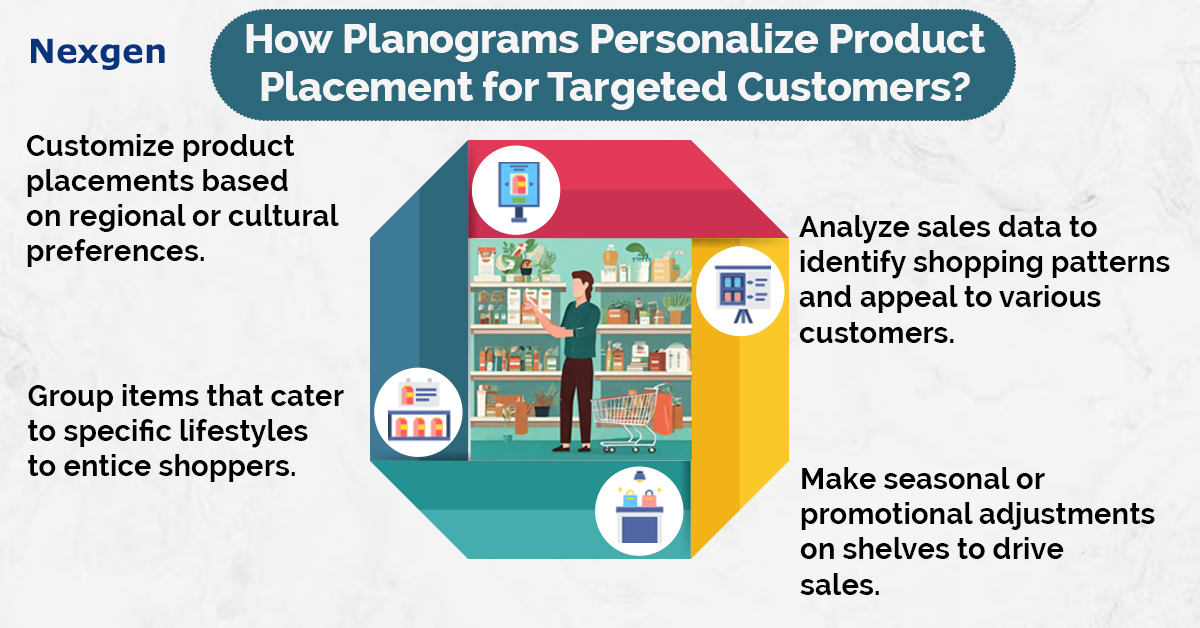Customers today seek more than just products; they crave experiences that resonate with their unique needs and preferences. Retailers are responding to this demand by shifting from a one-size-fits-all approach to a more personalized shopping experience. One of the key tools in this transformation is planogram.
Personalized product placement through planograms not only boosts sales but also significantly enhances in-store experiences. Customers are more likely to feel valued when they see that a store caters to their specific needs. Moreover, personalized planograms can reduce the time customers spend searching for products, leading to a more efficient and satisfying shopping experience. This convenience is particularly important in today’s fast-paced world, where consumers value retailers who respect their time.
The Role of Customer Data in Personalized Planograms
The foundation of personalized product placement lies in understanding the unique preferences, behaviors, and needs of different customer segments. Retailers now have access to a wealth of data - from purchasing history and loyalty program data to social media interactions and online browsing behavior. By leveraging this data, retailers can identify distinct customer segments and tailor product placements that cater specifically to each group.
For instance, a supermarket may identify a segment of health-conscious customers who prioritize organic and natural products. Using a personalized planogram, the retailer can create a dedicated section in the store where these products are prominently displayed. This not only enhances the shopping experience for these customers but also drives sales by making it easier for them to find the products they value.

Segment-Specific Product Placement Strategies
Shelf space planning enable retailers to implement segment-specific product placement strategies that resonate with targeted customer groups. Here is how:
- Localized preferences: Retailers can customize product placements based on regional or cultural preferences. For example, stores in areas with a large population of a specific ethnicity can feature products that cater to that demographic more prominently. A planogram can guide the placement of these items in high-traffic areas, ensuring they capture the attention of the target audience.
- Lifestyle-based segmentation: Customers with similar lifestyles often have overlapping product preferences. A planogram can group products that cater to specific lifestyles, such as fitness enthusiasts or busy professionals. By placing related products together, retailers create a more cohesive shopping experience that encourages customers to explore complementary items.
- Seasonal and promotional adjustments: Planograms can be adjusted to reflect seasonal trends or promotional campaigns that appeal to certain customer segments. For instance, during back-to-school season, a store can use a planogram to highlight school supplies, snacks, and other essentials that cater to families with school-aged children.
- Behavioral targeting: By analyzing shopping patterns, retailers can predict which products are likely to appeal to different customer segments. For example, if sales data shows that a particular group tends to purchase specific items together, a planogram can ensure these items are placed near each other, enhancing the likelihood of cross-selling.
Overview of Nexgen POG
Nexgen POG is a robust and user-friendly cloud-based visual merchandising tool. It is designed for quick and efficient planogramming with minimal effort. Planogram in retail can be designed by easily dragging and dropping the products. The multi-device compatibility feature of POG allows you to obtain, share and edit planogram on any device, including your phone. It helps in designing store-specific planograms for increased product visibility and sales.
Get Your Free Trial Now!